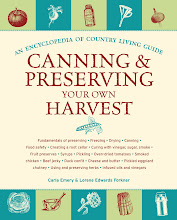Although I grew up ten minutes from Seattle, I was fortunate enough that my parents had about four acres of land to plant and garden, not to mention the plant nursery next door and tracts of undeveloped land. We had space enough (and irrigation enough) that our only concern for planting was the sunlight needs of the plants. A patch of corn would easily be moved to the other end of the property the following season if it needed more light, the rabbit hutches were displaced by plum trees if needed, and we lost track of all the blackberries, apples, and strawberries that grew wild in neglected parts of the property.
Now, I have twenty square feet to grow a garden, half of it heavily shaded and a good portion on a street, and for the first time in the Northwest, I have run out of space. Luckily, Carla Emery knows how to get a small plot to produce to the maximum it can:
1. Make use of semishaded areas unsuitable for tomatoes or root vegetables by growing leafy vegetables like lettuce, chard, mustard, or endive there.
2. Don't overplant herbs. Two parsley or chive plants can quite likely produce all you need unless your family is large.
3. Avoid sprawling varieties. You can plant 6 rows of carrots, beets, or onions in the same square footage that one row of squash would take because squash simply will spread out all over the place, but root vegetables don't. So limit or refuse summer squash, winter squash, cucumbers, watermelons, muskmelons, cantaloupes, and corn, because they take more space than they're worth. Or use the recently developed compact "bush" kinds of melons, squash, cucumbers, and and pumpkins.
4. Consider interplanting so that fast-maturing vegetables use the space between slower-maturing ones that will later spread; for instance, plant radishes or lettuce between vine plants like squash or pumpkin. They mature so fast that you get a crop before the vines need that space.
5. Give preference to continuously bearing vegetables; for instance, choose chard over spinach, because spinach has a brief period of productivity but then is done for the whole summer. Chard will keep making harvest for you until frost kills it. Other continuous bearers are tomatoes, broccoli, kale, lima beans, squash of allsorts, eggplant, peppers, cucumbers, chard, and Brussels sprouts.
6. Use wide-row and succession planting methods to give you the most vegetable productivity per square foot. For instance, peas have a relatively brief production season, but they produce heavily while they are at it, and then you can till up the ground they were in and plant something else. Succession planting works best with a long growing season, but in most places peas, lettuce, radishes, beets, and carrots mature quickly enough that you have time for a second crop if you plant as soon as the first is harvested.
7. Harvest daily in season. Broccoli, cucumbers, summer squash, beans, and chard, for example, will stop producing if they aren't harvested. But if you keep them faithfully and regularly harvested, then they keep producing and you maximize their production.
8. Encourage your garden to grow up rather than across: Try climbing beans (pole or runners) or cucumber strained to grow up something. Use a big vine such as runner beans, kiwi, or grapes to screen out an ugly area, make shade, or hang from a basket.
9. Plant tall crops such as corn or sunflowers on the north end of the garden so they don't shade other plants.
10. Practice deep watering; it allows you to plant closer together because the roots will go down instead of spreading sideways.








No comments:
Post a Comment